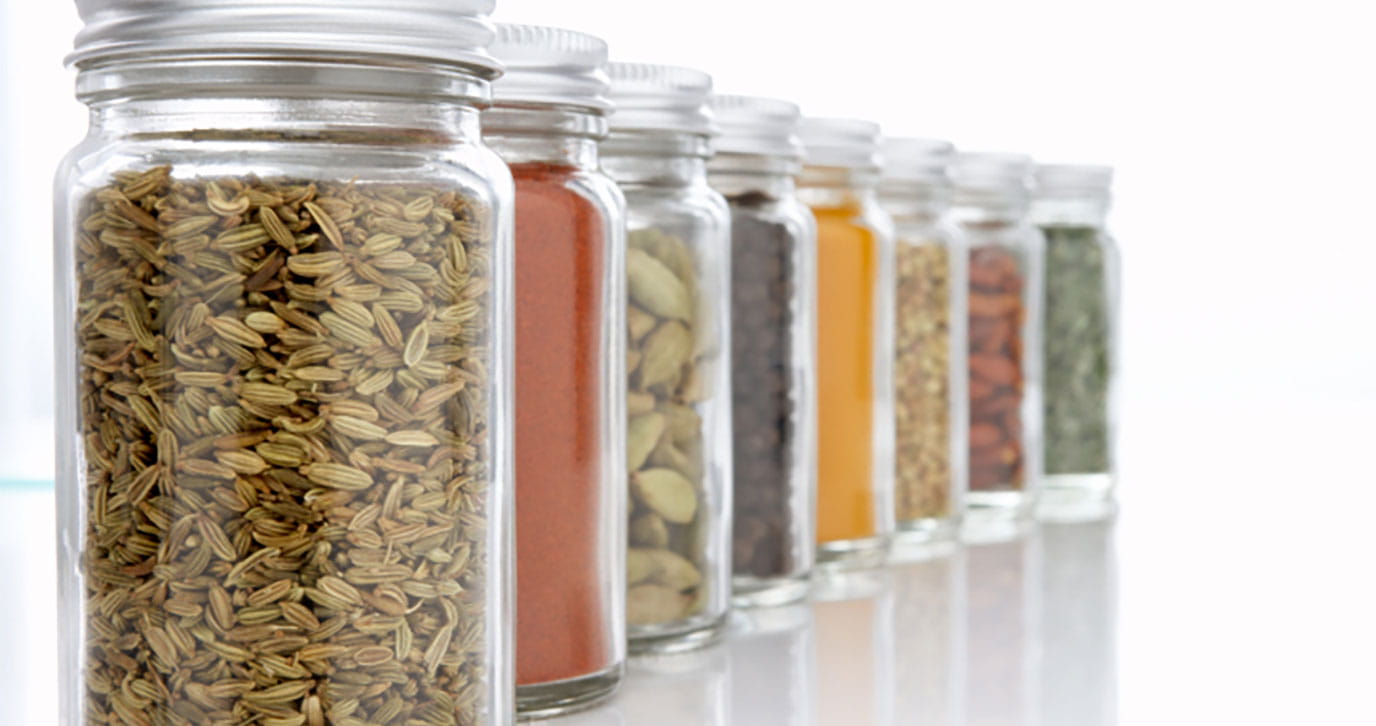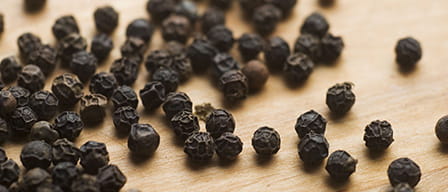
Anise


Basil is an annual herbaceous plant in the mint family and is one of the most popular herbs in the world. There are numerous herbs and shrubs included in the term basil, which collectively belong to the genus Ocimum (Lamiaceae). Common or sweet basil (Ocimum basilicum L.) leaves have had culinary importance for centuries. The name basil comes from the Greek basileus or “king.” Because of its popularity, basil is often referred to as the "king of the herbs". Common names include bawaribawai (Hindi), reihan (Persian), basilico (Italian), albahaca or basílico (Spanish), basilikum (German), manjericao (Portuguese), and káu-chàn-thah (Thai).
Basil is native to the tropical regions of Asia and Africa. It can grow to between 12 and 50 inches high, depending on variety and conditions. There are more than 30 species of herbs and shrubs of Ocimum. Commercial basil cultivars display a wide diversity in growth characteristics, colors and shapes of flower, leaf, and stem, and in aroma and flavor profiles. Sweet basil (O. basilicum) is the most common culinary type of which there are several cultivars. Almost all are edible and some are suited for different purposes. The main volatile components of basil essential oils are linalool, methyl chavicol, eugenol, and methyl cinnamate.


|
Common Name |
Scientific name |
Characteristics |
|
Sweet basil
|
basilicum |
Most common type. Milder, licorice flavor. Clove-like scent. |
|
Genovese basil
|
basilicum “Genovese” |
Stronger, sweet, spicy taste. |
|
Thai sweet basil
|
basilicum thyrsiflora |
Distinctive black licorice flavor. |
|
Purple basil
|
basilicum “Purpurascens” |
Bronzy-purplish leaves. Bold clove-like flavor. Also for ornamental purposes and garnishes. |
|
Bush or Greek basil
|
basilicum minimum |
Aromatic, sweeter flavor. |
|
Holy basil (Tulsi)
|
sanctum or tenuiflorum |
Very perfumed, aromatic fragrance. Also used in religious ceremonies. Bitter when eaten raw. |
|
Lemon basil
|
citriodorum |
Lemony fragrance. |
Many countries, including Egypt, India, Indonesia, and Mexico produce this plant commercially for the market.
Basil has been cultivated for over 5,000 years and has many culinary, cultural or ritualistic, and practical purposes. It was first cultivated in Asia and traveled to Africa and the Mediterranean along spice routes. It is thought to have been brought to ancient Greece by Alexander the Great, to England from India in the mid-1500s, and to the United States in the early 1600s. It was used for embalming by ancient Egyptians. In India it has a long history of sacred use and was thought to possess supernatural powers. Basil (especially holy basil or tulsi) was often used in religious ceremonies. It adorned graves or was held by the dead prior to burial to help protect the dead in the afterlife. In the 1600's, the English hung it in doorways to ward off flies and unwanted evil spirits. Farmers’ wives would give little pots of basil as gifts to visitors to wish them good fortune. In Jewish folklore basil was believed to add strength while fasting. In Portugal, basil plants were included in gifts to a sweetheart or lover on certain religious holidays. In Italy basil also was considered as a sign of love. Thus, if a pot of basil was placed on the balcony it meant that a woman was ready for her suitor to arrive, while if he brought a sprig of basil, she was supposed to fall in love with him.
Basil also has found many uses as part of various traditional medicines. It was recognized since ancient times for its therapeutic properties in the Unani and Ayurvedic medical systems. In India its uses were diverse and numerous in the remedies of multiple regions. For example, basil leaf and seed or even the whole plant were used for treating fever, cough, colds or as a treatment for reducing high blood pressure or combating fungal infections. Basil was used as part of herbal preparations to treat dysmenorrhea by creating a milk concoction that was consumed once a day for seven days. Leaf juices were used for digestive disorders, such as diarrhea, dysentery, constipation, gastritis, and vomiting. In Indonesia basil was used to treat malaria, back pain, high cholesterol, hypertension, headaches, and stroke. The leaves also found use as a tribal remedy for parasitic worm infestations. In Brazil, the leaves were made into tea for the treatment of delayed menstruation, fever, flu in children, indigestion, and nasal congestion. In Ethiopia, basil was used to cure allergic reactions by crushing it and mixing it with food. Besides these regional remedies basil also found use as an antidote for insect and snake bites, as a sedative, in poultices for sores and sinus problems, for relieving pain after childbirth, and for promoting production of breast milk in nursing mothers.
Basil seeds generally appear oval, ellipsoid, and small, although they can vary in size depending on the area in which they are planted and the country they are from. The seeds are dark brown in color and have porous surfaces.

The flavor and aroma profiles of basil differ among the varieties and are affected by the growing conditions and the stage at which the plant is harvested. The specific make-up of the essential oil can also differ as a function of the region in which the basil is grown. Depending on the species and cultivar, the leaves may taste like anise, with a strong, pungent, and often sweet smell. Methyl chavicol in the essential oil is thought to contribute to the sweet taste. Other compounds contributing to the anise flavor include anethole, eugenol, and menthol.
Basil is considered one of the finest aromatic herbs and is widely used to flavor cooked vegetables, tomato-paste products, fish, meat, sauces, stews, dressings, herbal teas, liqueurs, and mixed drinks. Typically, the leaves of this plant are consumed fresh or raw often as parts of salads. Basil is a popular culinary herb used in many cuisines including Italian and Thai. Genovese basil, a related cultivar of sweet basil, is a common ingredient in Italian dishes especially in pesto—a green Italian oil-and-herb sauce. Pesto’s other main ingredients are olive oil, garlic, and pine nuts. The Chinese use fresh or dried basils in soups and other foods. In Taiwan, fresh basil leaves are added to thick soups and thai basil is a condiment in the Vietnamese noodle soup, phở. Thai basil also can be soaked in cream or milk to create a novel flavor in ice cream or chocolates. Lemon basil is often used in Indonesian cuisine to flavor fish and can be added to tea to create a lemony flavor. It is a traditional herb used in the preparation of turtle soup by the English. The leaves are not the only part of basil used in culinary applications, the flower buds have a more subtle flavor and they are edible. Basil seeds occasionally can be used as well in countries such as Iran and India where they may be consumed in drinks (sharbat) and frozen desserts (faloodeh). Though not used in large quantities, sweet basil oil is used quite extensively in the flavoring of confectionery, alcoholic beverages (liqueurs), baked goods, and condiments.
Basil is commonly used fresh in recipes. In general, it is added at the last moment, as cooking quickly diminishes the flavor. Fresh basil can be preserved in oil or vinegar, or frozen. Freezing basil preserves the flavor of fresh herb, although the storage length of fresh basil is less than that of dried basil. Drying the herb weakens its flavor, and the remaining flavor tastes very different, with a weak coumarin flavor, reminiscent of hay.
Our understanding of how basil and other spices and herbs potentially benefit health is growing. Using diverse spices and herbs as seasonings has been shown to unlock new flavors and tastes that enhance our enjoyment of numerous foods and vegetables, while reducing our intake of added saturated fats, sugar and sodium. Explore ways to incorporate various spices and herbs to create healthy meals and expand your culinary experiences. Learn about recommendations for building a balanced and healthy diet.

Anise

Basil

Bay Leaf

Black Pepper

Black Seed

Cardamom
